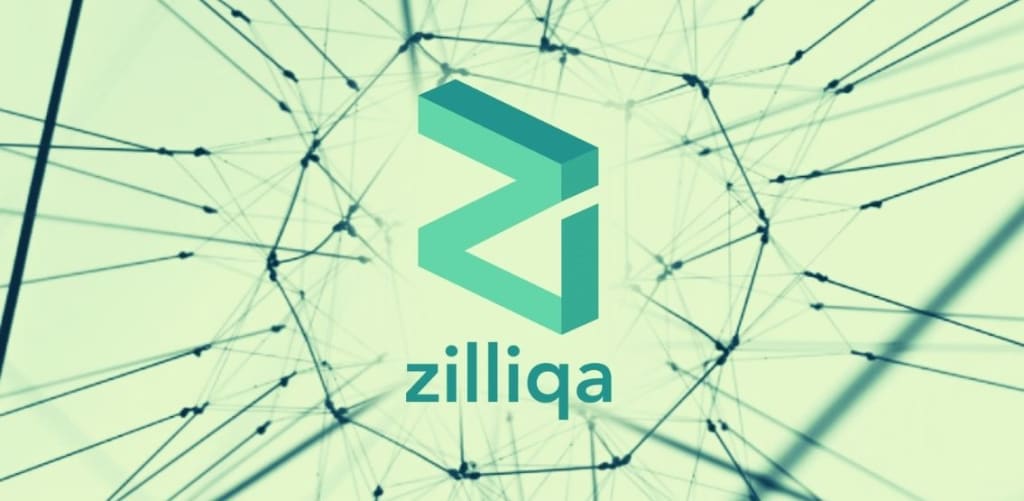
The growing number of blockchain protocols brings the promise of more inclusive, cost-effective financial transactions and simpler, more responsible versions of peer-to-peer commerce.
But these protocols don't always speak the same language, as their consensus mechanisms or their block structures can be completely different. These differences turn blockchains into silos of dapps, tokens, and ecosystems, creating barriers and unnecessary complexity for users. To facilitate widespread adoption, interoperability between protocols has become a critical and hot topic in the blockchain world.
Today, we're going to tell you all about how the Zilliqa, Switcheo and Polynetwork teams enable interoperability, and the myriad ways it can help you - whether you're a token holder, Bridge Smart Contract Development Services dApp creator, blockchain enthusiast or just Looking to learn more about our ecosystem. We'll also review our partnership, outline how the project will roll out, and what you can expect in the coming months.
What is interoperability?
Blockchain interoperability enables different blockchains to communicate with each other seamlessly and facilitate transactions across different blockchains. Imagine builders on the Ethereum and Zilliqa blockchains (and many others) being able to transfer data and transactions across other chains quickly and efficiently - compatible with other chains without reprogramming the entire dApp!
Why does this matter?
Currently, the vast majority of blockchains operate in silos. This means that many blockchains can only read, transact and access data within a single blockchain. This limits the blockchain user experience and hinders user adoption. In the absence of interoperability, we have separate ecosystems where users and developers have to choose which blockchain to interact with. Once they choose the blockchain, they can only use its features and products. Not the most decentralized build environment? A blockchain shouldn't be an island - working alone won't work out well. We need to stay connected with different protocols so that ideas, dApps and users can easily spread across platforms.
Through interoperability, users and developers can seamlessly transact with multiple blockchains and benefit from application offerings in these cross-chain ecosystems, decentralized finance (DeFi), gaming, supply chain logistics, Cross chain bridge development and more. The list goes on and on. Interoperability creates the ability for users and developers to not be forced to choose one blockchain over another, instead, they can benefit from multiple chains being able to interconnect.
Ultimately , interoperability creates a more beneficial and frictionless experience for users and developers. It is an important driver for the adoption and use of cryptocurrencies in the future.
How does this benefit Zilliqa token holders and developers?
- Interoperability provides a smoother user and developer experience and may attract more users and developers, which in turn will lead to more growth in the long run. It just allows for more avenues for adoption and growth
- Developers can benefit from building Zilliqa, known for its affordable gas fees or ability to scale. At the same time, the products they develop on one chain can be used by other crypto communities on the other chain - making Zilliqa nearly ubiquitous while increasing usability.
- These builders will be able to take advantage of Zilliqa's scalability, our Scilla-backed security, our speed, our competitive txn fees, and more. At the same time, they can easily attract users from other protocols without creating informational or procedural barriers for users. That's the beauty of interoperating systems!
Now that we've seen why it matters, let's move on to how we make it happen: our world-class partners.
What is PolyNetwork and why should it be used for Zilliqa interoperability?
PolyNetwork is a cross-chain interoperability protocol that helps bridge multiple chains and build next-generation internet infrastructure. PolyNetwork is helping us standardize cross-chain interoperability to create a better user and developer experience.
PolyNetwork is committed to interoperability with several major protocols (shown in the figure below). So you can imagine how powerful and impactful Zilliqa would be to standardize the interoperability program with such a partner!
A bridge to work with Switcheo
Switcheo is a top-notch blockchain team building decentralized protocols to disrupt traditional finance and grow the broader crypto DeFi ecosystem and global adoption. Switcheo is a valued partner of ours and we have been working with them for several years. Switcheo successfully launched the first DEX on Zilliqa, ZilSwap . As our partner on this project, Switcheo is helping us implement this interoperability bridge protocol. With collaborators, we are excited to continue our partnership with Switcheo as we work towards our shared goal of bringing more blockchain interoperability and DeFi/OpFi options to the world.
The Bigger Picture: What You Can Expect in 6–12 Months
- Seamless movement of tokens between Ethereum and Zilliqa
- dapps can be built on Zilliqa to leverage dApps on other chains.
- Zilliqa's existing ecosystem partners can trade on other chains, for example: ZWAP tokens can be traded on Switcheo DEMEX in the near future!
- dApps like ZilSwap will bring more users, liquidity and assets to trade. Pillar Protocol will have more lending assets (ie BTC and ETH).
- More developers will build on Zilliqa. We can also expect more DEXs and other DeFi products to appear on the scene.
All in all - this bridge will strengthen the combined efforts of our partners to bring DeFi to the mainstream.
Phases of the bridge project:
Ethereum-Zilliqa bridge implementation
The Bridge Project is a tripartite collaboration between the Zilliqa, Switcheo and PolyNetwork teams. It consists of several sub-projects that require the participation of the compiler team, the core system team, and the application development team. Therefore, the project went through 5 phases:
Phase 1 [Done by Zilliqa and PolyNet teams]: During this phase, we scoped the entire project and agreed on a broader architecture and added all necessary primitives and components. Below is a non-exhaustive list of sub-projects we have undertaken and completed during this phase:
- Conceive and build bridges
- Add the necessary primitives to the smart contract language
- Add necessary primitives to core protocol
- Writing bridge contracts in Solidity and Scilla to lock and mint tokens
- Development of Zilliqa-PolyNet Repeater
- Connect Zilliqa devnet to Ethereum Ropsten
- Extensive internal end-to-end testing
- Contract review
- Develop the necessary SDK
At the end of the first phase, Build a token bridge we were able to test end-to-end cross-chain transactions. Then we move on to the next stage of development.
✅ Phase 2 [Done by Switcheo and Zilliqa teams]: At this point, we have everything we need to work with the Switcheo team to get cross-chain support between Zilliqa and Switcheo. The Switcheo core team did a lot of the heavy lifting in completing the following sub-projects:
- Integrate Zilliqa with Switcheo TradeHub
- Governance Proposal for TradeHub
- Connecting Zilliqa Community Testnet with Ethereum Ropsten and Switcheo TradeHub devnet
- end-to-end testing
- Bridge UI Design in ZilSwap
At the end of the second phase, we finished the UI design of the bridge. The bridge UI will be part of ZilSwap. This will make ZilSwap a one-stop portal for users to transfer assets from Ethereum to Zilliqa, and then put those assets into the ZilSwap liquidity pool to earn yields. Here is a sneak peek of some UI flows:
🚧 Phase 3: [Continued collaboration between Switcheo and Zilliqa] : We are currently working on connecting the UI with smart contracts and putting the finishing touches on the UI. We have also been working on developing an incentive structure to encourage token holders to move their ETH-based assets from Ethereum to Zilliqa. The more assets that move from Ethereum to Zilliqa to ZilSwap, the more liquidity we have on the DEX, which will drive more traders, which will drive volume on the network. Therefore, we propose a competitive incentive mechanism to help steer initial liquidity (more on that; keep reading!).
Mainnet Incentives: While any ERC20 asset can be transferred from Ethereum to Zilliqa via the bridge, we have initially identified three key assets that are critical to the Zilliqa ecosystem - namely WBTC, ETH, and USDT . The rationale behind the selection of these assets may be quite obvious: these assets are in the hands of the majority of crypto users and have the most liquidity and trading volume. Additionally, the introduction of USDT will also introduce the first USD-backed stablecoin on ZilSwap. WBTC and ETH can also be used as collateral for the Pillar protocol in the future and will be important assets for our DeFi ecosystem.
Our goal is to lock up $60 million worth of assets and have set aside $3.75 million worth of ZIL for this as an incentive for anyone who transfers any of these three assets to ZilSwap. These ZIL rewards will be distributed for a total of 6 weeks, in order to receive these rewards, users must transfer WBTC or ETH or USDT (ERC20) from Ethereum to Zilliqa and then add them to the corresponding pool on ZILSwap. The distribution of ZIL rewards to liquidity providers will follow a model similar to ZWAP distribution (weekly payments), based on their liquidity and other factors such as duration.
If the target TVL of $60 million is reached, the APR that the LP will receive will be 50% (annualized) . APY can be much higher for early LPs. So, get your assets ready and don't miss out on early bird higher yields!
PS: To incorporate this incentive, the ZilSwap team will have to redesign their ZWAP reward payment tool to allow the system to reward ZWAP and any other ZRC-2 tokens (and ZIL) for any pool on ZilSwap. This new design will also help other mining pools where token teams want to supplement ZWAP rewards with their own tokens.
Currently, the plan is to integrate this new system within 2–3 weeks of the main bridge release. However, the system distributes rewards retrospectively, so even if there are no rewards for the first few weeks after the mainnet launch, rewards will be distributed retrospectively once the new reward distributor is up and ready.
🚧 Phase 4: [Collaboration between Zilliqa community, Switcheo and Zilliqa teams] : In this phase, we open a bridge for the community to test and play. We expect the testnet version to be in public beta testing in about 10 days.
The goals of our public beta testing are:
- Test security and UI/UX : We want to test the bridge with as many users as possible to ensure it is secure, frictionless, robust, and responds well to community traffic. Just as importantly, all users found the bridge intuitive and easy to use.
- Community Feedback : We will invite feedback on interface, usability and technology. We will also work hard to ensure the most relevant feedback is taken before the mainnet launch. The practice of "escalation and continuous improvement" will continue after the release. After all: improvement is always possible!
The community will be rewarded for participating in the public beta.
We estimate that the public beta test will last about two weeks, but additional time may be required if the community reports any major UI/UX or security issues that need more time to be fixed.
Once the community, Switcheo/ZilSwap team, and Zilliqa team are all satisfied with the testnet launch, then we will launch the bridge on mainnet.
Stage 5: [What's next? ]: The bridge will allow assets such as WBTC, ETH, and USDT to be transferred from Ethereum to Zilliqa. However, you can imagine other types of assets, such as XSGD which has been issued on Zilliqa and Ethereum. What about those? Does the bridge and accompanying infrastructure allow for the transfer of these assets from one chain to another?While we can leverage parts of this bridge, some additional work is required to enable cross-chain transfers of these assets. Essentially, this will involve writing new cross-chain contracts and possibly a new UI. We encourage community developers to try it out. We will make all source code public, Build a token bridge which will make it easier for the community to adjust code for such tokens. Excitingly, over time, it will be the basis for the ability to enable more cross-chain/multi-chain assets to benefit from this bridge in the future.
ERC20 ZIL to Mainnet ZIL Token Swap: Same for those who did not swap their ERC20 ZIL to Mainnet ZIL in 2019 . More work needs to be done to enable token swapping. After the mainnet launch, we will focus on making this unique process possible. We look forward to delivering on our promise to those community members who were unable to participate in the initial coin exchange.
in conclusion
We hope you enjoy this update. This is just the beginning of Zilliqa's interoperability mission. We look forward to increasing user adoption in the coming months and years by empowering users and developers to leverage the Zilliqa blockchain and ecosystem.
About the Creator
Sandyzakk
Enter and create digital economies, leveraging blockchain technology with our Metaverse development services. Design, build, and launch amazing experiences for your users effectively with a leading metaverse development company.






Comments
There are no comments for this story
Be the first to respond and start the conversation.